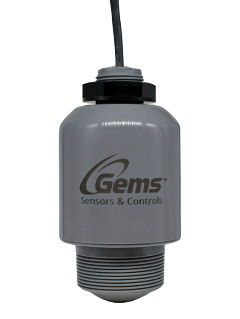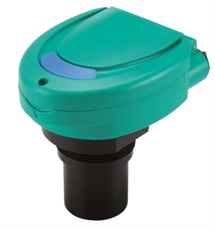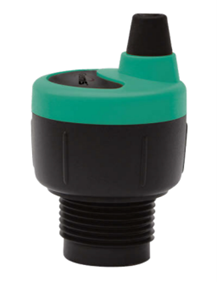Non contact level sensors for liquids are an efficient method to measure tank level for several reasons.
- Non contact design eliminates the requirement of material compatibility between the liquid and the sensor since it’s a through the air sensing technology.
- Non contact design also ensures there are no issues with viscous medias coating float-based sensors, causing them to fail.
- Non contact level sensors are by default a no moving parts technology, therefore there is no risk for mechanical failures that occur in contact based sensors.
- Non contact level sensors are smaller by design which reduces shipping cost and transit time compared to large stem and float-based sensors.
- Non contact level sensors small design also reduces installation time and the amount of personnel needed to install.

Non Contact Level Sensors for Liquids can be broken down into two sensing technologies, Radar and Ultrasonic.
Radar non contact level sensors work by sending out short microwave signals toward the liquid via the sensor. The microwave signal then hits the liquid surface and bounces back toward the sensor. The sensor utilizes the time-of-flight principle which uses the known speed of the microwave, and the time it took for the signal to return, divided by two (since it had to travel down to the liquid and then back up to the sensor) to determine the distance between the liquid level and the sensor. Since most level is based on the height of the liquid, not the height of the non-liquid (air), the air height is subtracted from the total tank depth to determine the liquid level!

RLI-80 Radar Non Contact Level Sensor for Liquids

Features:
- non-contact
- 2" NPT mounting
- PVDF housing
- Intrinsically safe
- UL/c-UL
- ATEX
- IECEx
- 50' (5m) sensing range
- 0.2" (5mm) accuracy
- Modbus
- 4-20mA
- Bluetooth®
- IP 67
- 15' or 30' TPE Jacketed Cable
- 1 ¼" - 12" for bracket mounting
- Full vacuum to 43 PSI
- 40 to 80C
UCL 520 Ultrasonic Level Sensor

Features:
- Non-contact
- 2" NPT mounting
- PVDF housing
- 26’ (8m) sensing range
- 0.2” (5mm) accuracy
- 4-20mA
- IP 65
- ½” NPT Conduit
- 30 PSI
- -40 to 71C.
UCL 510 Ultrasonic Level Sensor

Features:
- Non-contact
- 1" NPT mounting
- PVDF housing
- 49” (1.25 m) sensing range
- 0.125” (3 mm) accuracy
- 48” Cable
- 1 ¼”-12 For Bracket Mounting
- 30 PSI
- -40 to 80C.
 SEARCH OUR RESOURCE CENTER
SEARCH OUR RESOURCE CENTER
